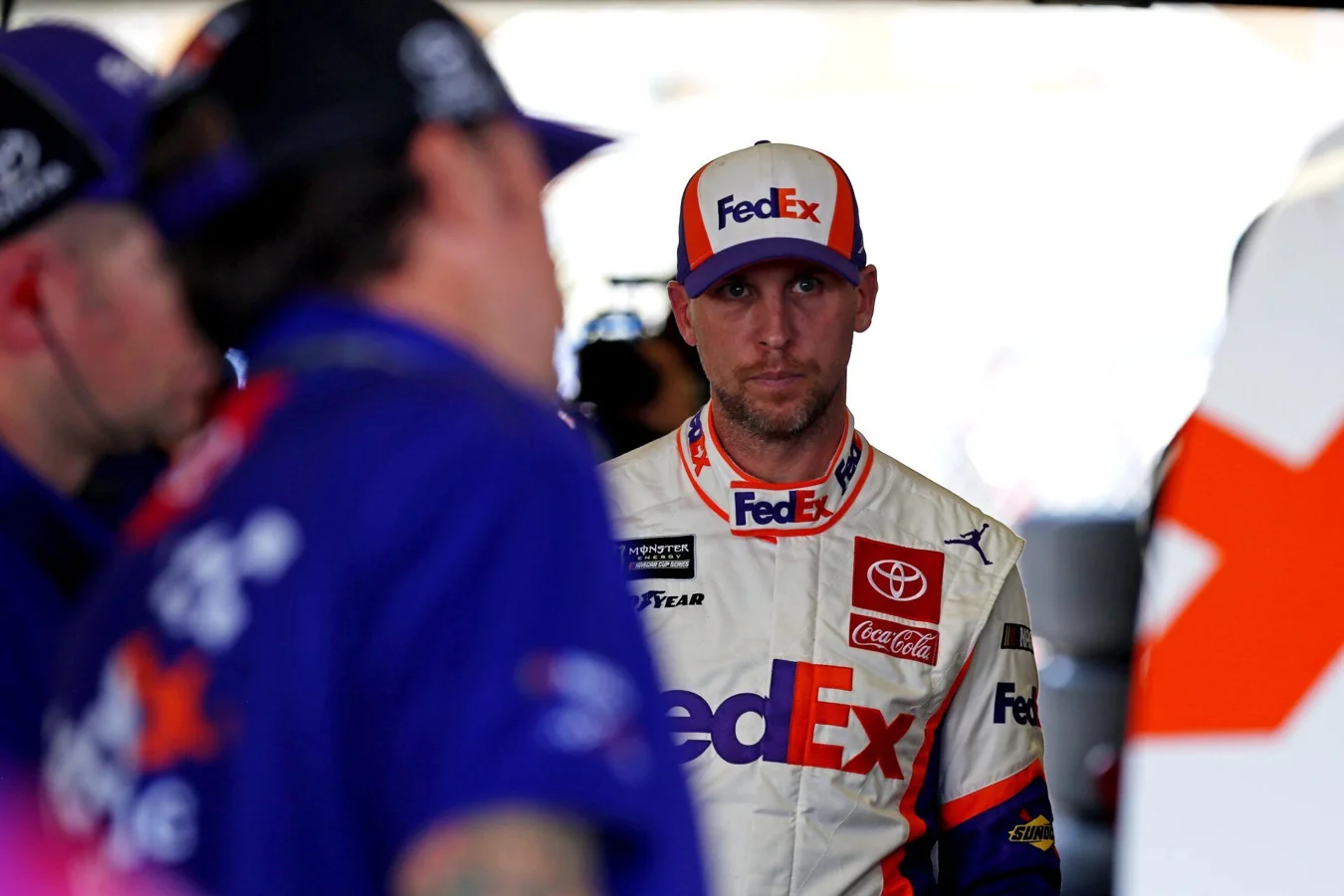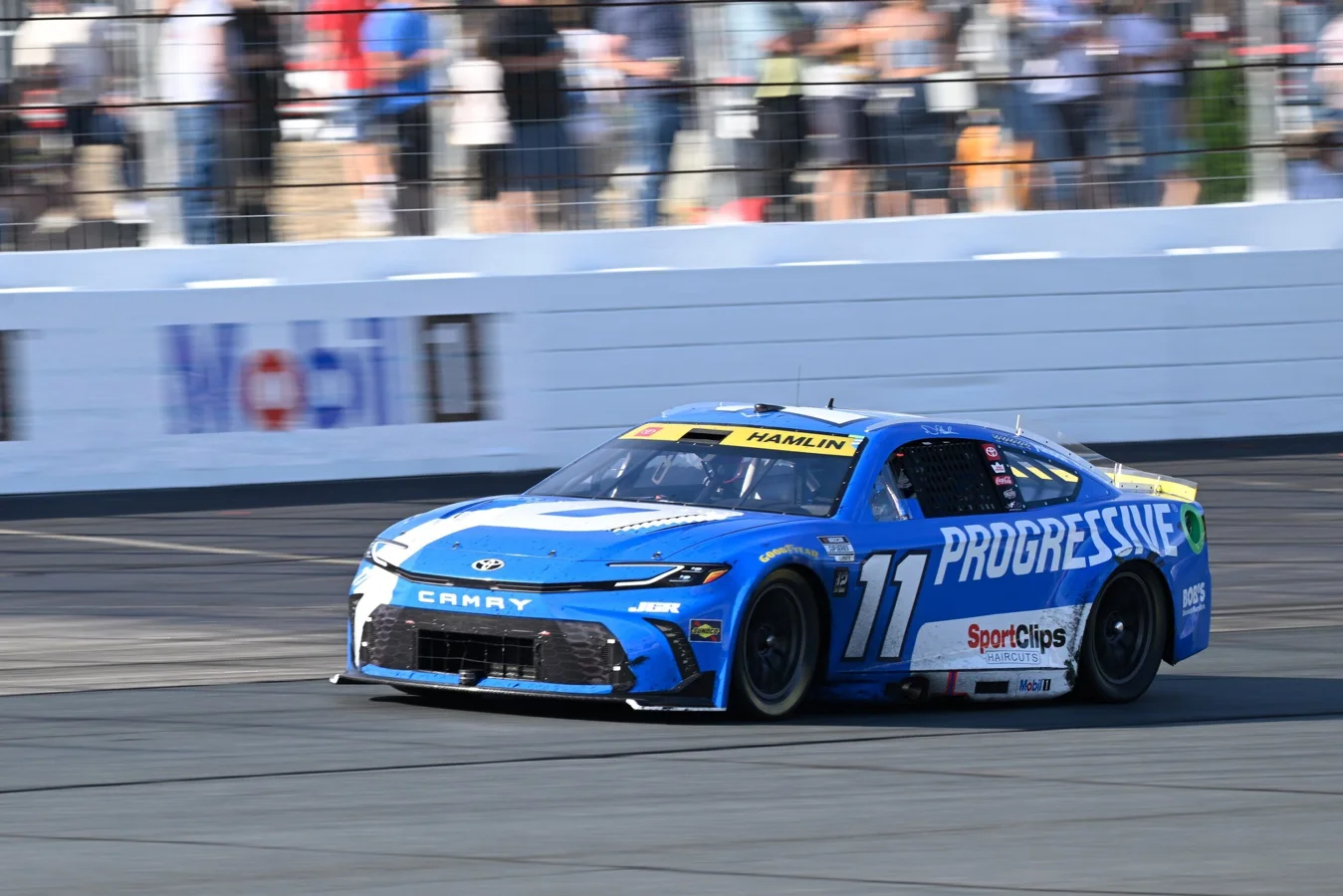The Denny Hamlin Kansas race controversy erupted after a dramatic final lap in Sunday’s Hollywood Casino 400 at Kansas Speedway, when Hamlin and Bubba Wallace, his own 23XI Racing driver, collided in the closing corners and lost the win to Chase Elliott. The confrontation has sparked intense debate in NASCAR circles, with Hamlin standing firm and refusing to issue an apology for the outcome, citing his commitment to racing hard for victory.
High Stakes and High Tension in Kansas Speedway’s Closing Laps
Sunday’s race delivered one of the season’s most memorable conclusions. As Denny Hamlin chased his 60th NASCAR Cup Series triumph, he found himself dueling side by side with Bubba Wallace—the driver of his co-owned 23XI Racing No. 23 toyota/”>Toyota—on the last lap. Racing into turn 3, the two made contact, causing Wallace to brush the wall and inadvertently opening the door for Chase Elliott to surge underneath and seize the win for chevrolet/”>Chevrolet. The moment instantly became the talk of the sport, not only because it involved Hamlin and his own team’s car but also because it cost Toyota a much-needed victory despite restarting the final laps in the top five spots.
Fan and pundit reactions were swift and fierce. Many criticized Hamlin for costing his own team a potential win and for enabling a rival manufacturer’s late-race success. Still, Hamlin remained steadfast.

Hamlin Explains His Perspective and Rejects Any Regret
Recording his Actions Detrimental podcast the following Monday, Hamlin addressed the uproar directly:
If they’re wanting an apology, they can turn off now,
Denny Hamlin, Driver/Co-owner. His stance was unwavering. He expanded on his competitive mindset:
Because I’m racing for the win, and I definitely won’t apologize for racing for the win.
Denny Hamlin, Driver/Co-owner.
Hamlin separated his dual roles, clarifying that on race days, his only priority is piloting the No. 11 car for Joe Gibbs Racing—not acting as team boss of 23XI. He explained,
On Sunday, I am the driver,
Denny Hamlin, Driver/Co-owner, adding that his responsibilities as owner end when the helmets go on. Hamlin emphasized he would race Wallace or any teammate just as fiercely if the situation demanded it:
I was racing the No. 23 (Wallace) the same as I would race anybody in that moment. Truthfully, I would race my teammates the same way.
Denny Hamlin, Driver/Co-owner.
He also stressed that his obligations as a team owner resume only during the week:
My responsibilities as the team owner comes Monday through Saturday,
Denny Hamlin, Driver/Co-owner. Hamlin made it clear where his loyalty lies on race day:
It is not up to me to get 23XI into the Round of 8. It’s not my responsibility. My responsibility is to get the No. 11 into the Round of 8. I’m the driver on Sunday of that No. 11. Joe (Gibbs) pays me a lot of money to make sure that car wins a championship or has a shot to.
Denny Hamlin, Driver/Co-owner.
Tension with Wallace and No Regrets Over Final Decisions
The aftermath between Hamlin and Wallace was emotional, as Wallace made his feelings known on the cooldown lap. Despite the visible frustration, Hamlin maintained that Wallace’s anger was aimed solely at the on-track competitor. This separation of roles is deeply embedded in Hamlin’s racing philosophy, and he has long asserted there will be no preferential treatment between his own team cars and rivals when battling for high-stakes results.
Hamlin Reviews Race Data and Blames Circumstances, Not Intent
Hamlin defended his racecraft by analyzing the data post-race, demonstrating that his driving line and braking point in turn 3 were consistent with previous laps. The only difference was the proximity of Wallace at his outside door, which may have upset the balance of the car and led to the contact. He explained his thought process:
I took what I thought was the best option, and that was drive into the corner the exact same as I always have,
Denny Hamlin, Driver/Co-owner. He added,
I have no clue how close to me the No. 23 car is. And when I drive it into the same spot, I have no idea I’m about the enter the corner with no front downforce whatsoever.
Denny Hamlin, Driver/Co-owner.
One lingering question remained regarding whether Hamlin’s spotter provided information on Wallace’s line as the field raced into the crucial corner. Hamlin did not elaborate on this aspect of the finish, leaving some to speculate about possible missed communication in those hectic final moments.
Hamlin Analyzes Alternative Scenarios and Accepts the Outcome
True to form, Hamlin considered whether he could have played the final corners differently. He said,
I think there’s only a couple ways to win it,
Denny Hamlin, Driver/Co-owner. He pondered whether adjusting his line or timing might have changed the result:
If I could do it again, I would like to try that. I’m not saying it would have been successful, but that’d be something I will psychoanalyze.
Denny Hamlin, Driver/Co-owner.
Even after sleep and reflection, Hamlin concluded that his real-time decision likely would not have changed much with the benefit of hindsight. He remarked,
I wish I could say, “oh, I definitely would do this,’ but even now today — having hours to sleep on it — the decision I made in the matter of a split second is not that different than what I would do the next morning,
Denny Hamlin, Driver/Co-owner. He added,
I just wish the outcome was a little different.
Denny Hamlin, Driver/Co-owner.
Competition Between Manufacturers and the Role of Teamwork
Hamlin pushed back on speculation that Toyota drivers might have collectively handed the victory to Chevrolet by racing one another too aggressively and letting Elliott capitalize. He dismissed the notion as unfounded, stating each Toyota driver, whether himself, Wallace, Christopher Bell, Chase Briscoe, or Tyler Reddick, had individual priorities to race for—be it a win, a playoff spot, or crucial points. The race’s overtime period saw the Toyotas locked in intense competition, with no sign of orchestrated teamwork.
Emotional Fallout and the Impact on Hamlin’s Championship Effort
The turbulent result and public attention have only added pressure as the NASCAR playoffs continue. As Hamlin battles for both his first championship and his milestone 60th win, he must do so with scrutiny heightened by this controversy. The fallout underscores how split-second choices under the intense pressure of championship contention can shape reputations and relationships within the garage.
The closing moments left Hamlin not only disappointed for missing out on the win but also sympathetic that Wallace missed his opportunity. Despite his frustration, Hamlin underscored the thrilling nature of the contest:
I hate that we didn’t win, and my second hate is that the No. 23 car didn’t win. But man, it was an exciting fricking race. And that was two competitors going for it.
Denny Hamlin, Driver/Co-owner.
What This Means for NASCAR’s Playoffs and Team Dynamics
As NASCAR’s Cup Series postseason advances, the Denny Hamlin Kansas race controversy exemplifies how the drive for victory can generate both unforgettable spectacle and controversy when team interests collide with individual ambition. The rivalry and intensity witnessed at Kansas will likely continue to influence how drivers and teams balance the competing demands of personal glory, manufacturer goals, and organizational loyalty. For Hamlin, the only acceptable approach remains giving everything for the No. 11 on race day, regardless of outside perceptions or internal politics. The championship battle is far from over, and Kansas has only added to its emotional energy and narrative intrigue.
WHAT A FINISH. CHASE ELLIOTT GETS BY BUBBA WALLACE AND DENNY HAMLIN TO WIN AT KANSAS! pic.twitter.com/QkSw4rSWt2
— FOX: NASCAR (@NASCARONFOX) September 28, 2025

Bubba Wallace shows his displeasure to team owner Denny Hamlin after the checkered flag. #NASCAR pic.twitter.com/belqTREHw0
— Noah Lewis (@Noah_Lewis1) September 28, 2025
